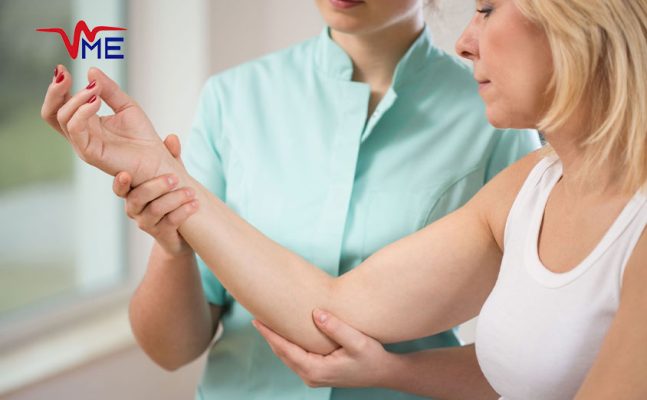
Causes and Risk Factors of Tennis Elbow
Repetitive Motions
Activities that involve repetitive wrist and arm movements can strain the tendons and lead to tennis elbow. This is common in sports like tennis, squash, and badminton.
Overuse of Forearm Muscles
Continuous overuse of the forearm muscles, such as in manual labor jobs like carpentry, painting, and plumbing, can cause the tendons to become inflamed.
Poor Technique
Using improper techniques during sports or physical activities can increase the strain on the tendons. For example, incorrect gripping or swinging of a tennis racket can contribute to the development of tennis elbow.
Inadequate Equipment
Using equipment that is not suited to your body type or the specific activity, such as a tennis racket that is too heavy or has a small grip, can lead to excessive strain on the tendons.
Risk Factors for Tennis Elbow
Age
Tennis elbow is more common in adults between the ages of 30 and 50. As tendons age, they become less flexible and more prone to injury.
Occupation
Jobs that involve repetitive arm and wrist movements, such as carpentry, painting, and butchery, increase the risk of developing tennis elbow.
Sports Participation
Engaging in sports that require repetitive arm movements, such as tennis, squash, and weightlifting, can increase the likelihood of developing tennis elbow.
Previous Injury
A history of arm or elbow injuries can predispose individuals to tennis elbow, as previous injuries can weaken the tendons.
Improper Ergonomics
Poor ergonomics at work or home, such as incorrect posture while using a computer or lifting heavy objects improperly, can contribute to the development of tennis elbow.
Symptoms and Diagnosis of Tennis Elbow
Tennis elbow, or lateral epicondylitis, is a condition characterized by pain and tenderness on the outer part of the elbow. Identifying the symptoms early and getting a proper diagnosis is crucial for effective treatment and recovery. Here, we outline the key symptoms and diagnostic methods to help residents of Dubai recognize and address this condition promptly.
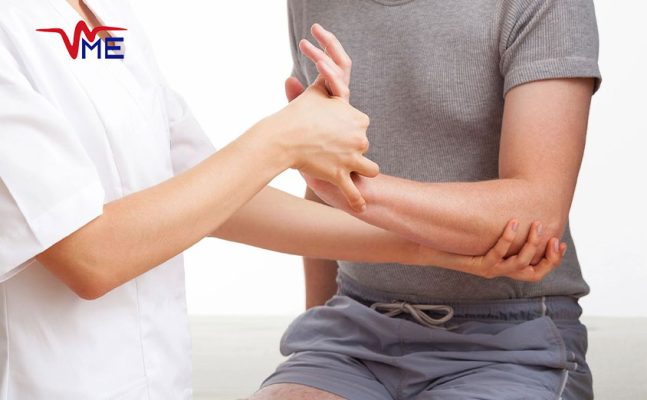
Symptoms of Tennis Elbow
Elbow Pain
The primary symptom is pain on the outer part of the elbow, which can extend down the forearm and into the wrist. This pain is often felt during activities that involve lifting, gripping, or twisting the forearm.
Tenderness
Tenderness to touch on the outer part of the elbow is a common symptom. Pressing on this area usually exacerbates the pain.
Weak Grip
Individuals with tennis elbow may experience a weakened grip, making it difficult to hold objects firmly. This can affect daily tasks such as shaking hands, holding a cup, or using tools.
Burning Sensation
Some people report a burning sensation on the outer part of the elbow, especially after prolonged use of the arm.
Stiffness
Stiffness in the elbow joint, particularly in the morning or after periods of inactivity, can be a sign of tennis elbow.
Radiating Pain
Pain that radiates from the elbow down to the forearm and wrist, particularly during activities that strain the forearm muscles, is a common symptom.
Diagnosis of Tennis Elbow
Physical Examination
A thorough physical examination by a healthcare professional is the first step in diagnosing tennis elbow. The doctor will check for pain and tenderness in the elbow and forearm by pressing on the affected area and asking the patient to move their arm in specific ways.
Patient History
Reviewing the patient’s medical history and discussing their symptoms and activities helps in diagnosing the condition. Information about any repetitive movements or activities that may have contributed to the pain is particularly valuable.
Imaging Tests
Imaging tests such as X-rays or MRI scans may be used to confirm the diagnosis and rule out other conditions. X-rays can help identify bone abnormalities, while MRI scans provide detailed images of the tendons and soft tissues.
Specific Tests
Tests such as the “chair test,” where the patient tries to lift a chair with the palm down and elbow straight, can help diagnose tennis elbow. Pain during this movement is a common indicator.
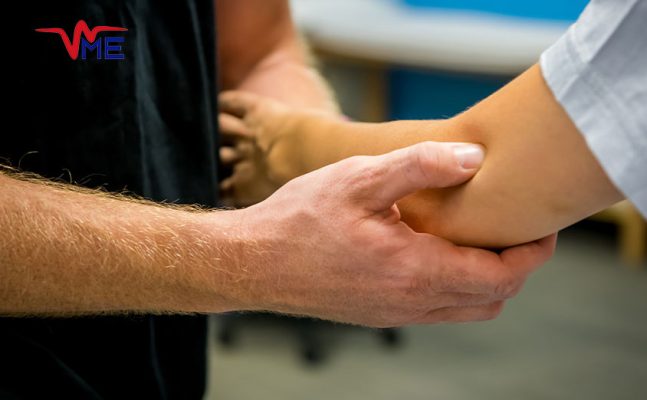
Treatment Options for Tennis Elbow
Tennis elbow, or lateral epicondylitis, requires timely and effective treatment to alleviate pain and restore function. In a bustling city like Dubai, where an active lifestyle is common, understanding the available treatment options is crucial. Here, we outline various treatment methods, tailored to meet the needs of Dubai’s residents.
Non-Surgical Treatments
Rest and Activity Modification
Resting the affected arm and avoiding activities that exacerbate the pain is essential. Modifying tasks to reduce strain on the elbow can significantly aid in recovery.
Ice Therapy
Applying ice packs to the affected area for 15-20 minutes several times a day can help reduce inflammation and pain. This is particularly useful in the initial stages of the condition.
Medications
Over-the-counter pain relievers such as ibuprofen or aspirin can help manage pain and reduce inflammation. For more severe cases, a doctor may prescribe stronger anti-inflammatory medications.
Physical Therapy
Engaging in a structured physical therapy program can strengthen the forearm muscles and improve flexibility. Therapists may use exercises, stretches, and manual therapy techniques to promote healing.
Ergonomic Adjustments
Making ergonomic changes at work and home, such as using a supportive mouse pad or adjusting the height of a workstation, can help reduce strain on the elbow.
Bracing
Wearing a brace or a forearm strap can provide support to the elbow and reduce strain on the tendons. This is especially beneficial during activities that involve repetitive arm movements.
Ultrasound Therapy
Ultrasound therapy uses sound waves to promote tissue healing and reduce pain. This non-invasive treatment can be an effective part of a comprehensive treatment plan.
LDM MED TRIPLE Therapy
At Wellcometme, we offer the innovative LDM MED TRIPLE device, which utilizes three different modes of ultrasound waves to enhance blood circulation, reduce inflammation, and stimulate tissue regeneration. This advanced treatment accelerates recovery and alleviates pain effectively. The LDM MED TRIPLE device is particularly effective in targeting the deep tissues, ensuring a more comprehensive healing process and faster pain relief for those suffering from tennis elbow.
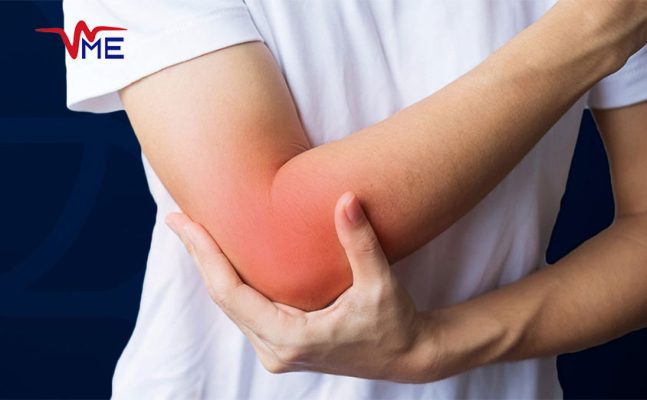
Surgical Treatments
When Surgery is Needed
Surgery is considered a last resort when non-surgical treatments have failed to provide relief after 6-12 months. Persistent pain and significant loss of function may warrant surgical intervention.
Types of Surgical Procedures
Open Surgery
This involves making an incision over the elbow to access and repair the damaged tendons. The surgeon may remove damaged tissue and reattach healthy tendon tissue to the bone.
Arthroscopic Surgery
A minimally invasive procedure where small incisions and a camera are used to guide the repair of the damaged tendons. This method typically results in quicker recovery times and less postoperative pain.
Post-Surgical Rehabilitation
After surgery, a comprehensive rehabilitation program is crucial for successful recovery. This includes physical therapy to restore strength and flexibility, as well as gradual return to normal activities.
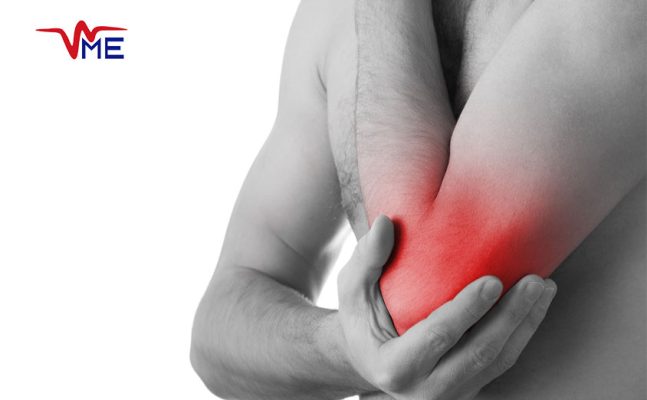
Alternative and Complementary Treatments
Shockwave Therapy
Extracorporeal shockwave therapy (ESWT) uses high-energy shockwaves to promote healing and reduce pain. It is a non-invasive treatment option that can be effective for chronic cases.
Platelet-Rich Plasma (PRP) Therapy
PRP therapy involves injecting a concentration of the patient’s platelets into the affected area to stimulate healing. This regenerative treatment can be beneficial for tendon repair and pain reduction.
Acupuncture
Acupuncture, an ancient Chinese medicine technique, involves inserting thin needles into specific points on the body to relieve pain and promote healing. It can be an effective complementary treatment for tennis elbow.
At Wellcometme, we provide a comprehensive range of treatment options for tennis elbow, tailored to meet the unique needs of our patients in Dubai. Our team of specialists is dedicated to delivering personalized care and the latest treatment modalities to ensure the best outcomes. If you are experiencing symptoms of tennis elbow, contact us today to schedule a consultation and explore the most suitable treatment options for you.

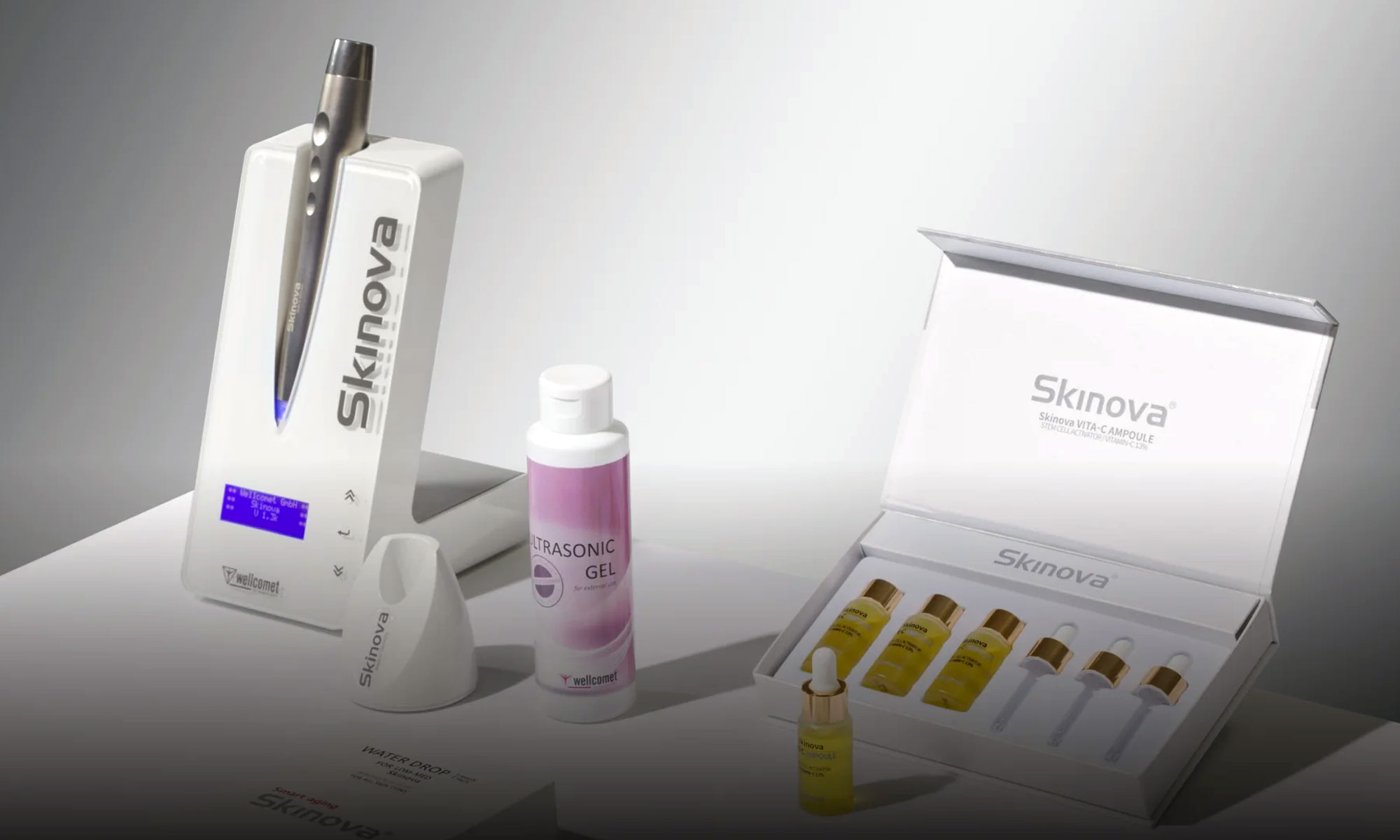


Excellent overview! This article covers a range of effective solutions for tennis elbow treatment. Informative and well-structured!